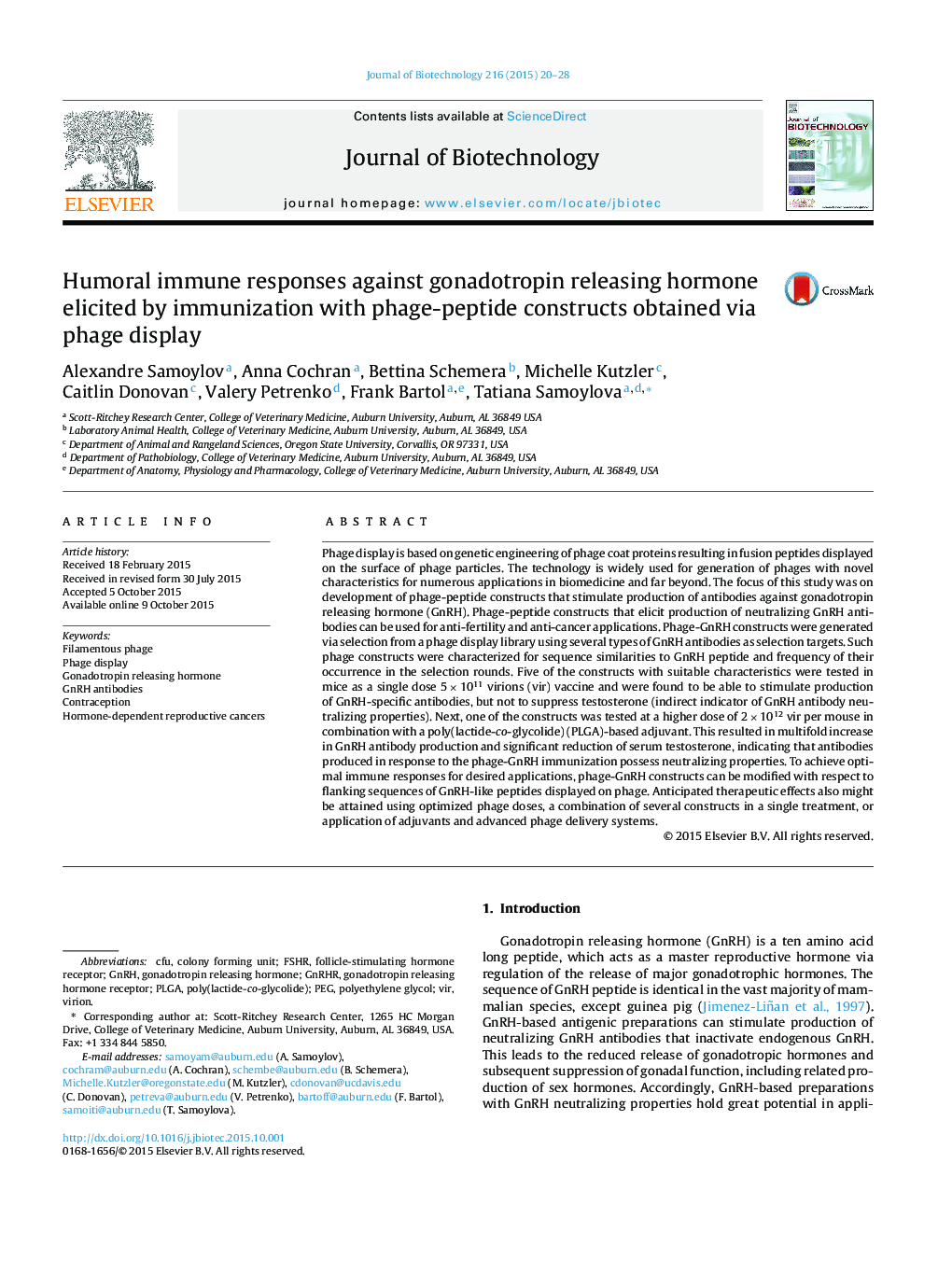| Article ID | Journal | Published Year | Pages | File Type |
|---|---|---|---|---|
| 22789 | Journal of Biotechnology | 2015 | 9 Pages |
•Phage-GnRH constructs were generated via selection from a phage display library.•Phage-GnRH constructs stimulated production of specific GnRH antibodies in mice.•GnRH antibody levels and persistence in blood varied depending on the construct.•No adverse reaction to immunizations with phage-GnRH constructs were observed.•Optimization of immune responses to phage-GnRH constructs is possible.
Phage display is based on genetic engineering of phage coat proteins resulting in fusion peptides displayed on the surface of phage particles. The technology is widely used for generation of phages with novel characteristics for numerous applications in biomedicine and far beyond. The focus of this study was on development of phage-peptide constructs that stimulate production of antibodies against gonadotropin releasing hormone (GnRH). Phage-peptide constructs that elicit production of neutralizing GnRH antibodies can be used for anti-fertility and anti-cancer applications. Phage-GnRH constructs were generated via selection from a phage display library using several types of GnRH antibodies as selection targets. Such phage constructs were characterized for sequence similarities to GnRH peptide and frequency of their occurrence in the selection rounds. Five of the constructs with suitable characteristics were tested in mice as a single dose 5 × 1011 virions (vir) vaccine and were found to be able to stimulate production of GnRH-specific antibodies, but not to suppress testosterone (indirect indicator of GnRH antibody neutralizing properties). Next, one of the constructs was tested at a higher dose of 2 × 1012 vir per mouse in combination with a poly(lactide-co-glycolide) (PLGA)-based adjuvant. This resulted in multifold increase in GnRH antibody production and significant reduction of serum testosterone, indicating that antibodies produced in response to the phage-GnRH immunization possess neutralizing properties. To achieve optimal immune responses for desired applications, phage-GnRH constructs can be modified with respect to flanking sequences of GnRH-like peptides displayed on phage. Anticipated therapeutic effects also might be attained using optimized phage doses, a combination of several constructs in a single treatment, or application of adjuvants and advanced phage delivery systems.
